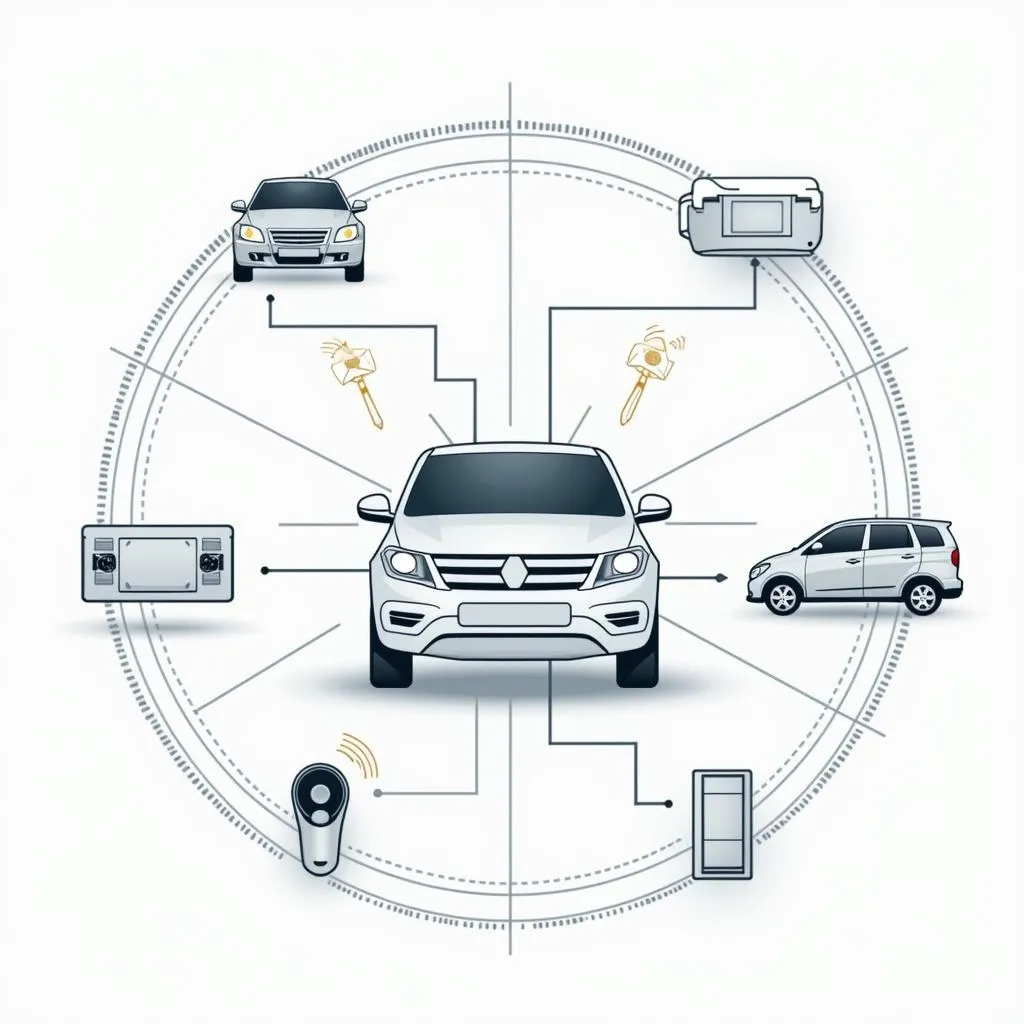The ABS brake warning light is a crucial safety indicator in your vehicle. When illuminated, it signals a potential issue with your Anti-lock Braking System (ABS), which plays a vital role in preventing wheel lockup during braking. This article will delve into the common causes of an ABS brake warning light, diagnostic approaches, and potential solutions, empowering you to address this concern effectively.
Understanding the ABS Brake System and Warning Light
The ABS is a sophisticated safety feature designed to enhance vehicle control during hard braking. It functions by monitoring wheel speed sensors and regulating brake pressure to prevent the wheels from locking up. This process allows the driver to maintain steering control and stability, reducing the risk of skidding and accidents.
When the ABS warning light illuminates on your dashboard, it signifies a potential malfunction within the system. While your standard braking system may still function, the ABS may not engage when needed, compromising your safety, especially on slippery surfaces.
Common Causes of an ABS Brake Warning Light
The ABS warning light can be triggered by various factors, ranging from minor glitches to more serious problems. Identifying the root cause is crucial for effective troubleshooting:
1. Faulty Wheel Speed Sensors
Wheel speed sensors are pivotal components of the ABS, continuously monitoring the rotational speed of each wheel. If a sensor malfunctions or becomes covered in debris, it can disrupt the signal to the ABS control module, triggering the warning light.
2. Malfunctioning ABS Control Module
The ABS control module acts as the brain of the system, receiving data from the wheel speed sensors and regulating brake pressure accordingly. A faulty control module can disrupt the entire ABS operation, illuminating the warning light.
3. Low Brake Fluid Level
Adequate brake fluid level is crucial for proper ABS function. Low brake fluid can indicate a leak in the system, which can affect hydraulic pressure and trigger the ABS warning light.
4. Damaged ABS Wiring or Connectors
The ABS system relies on a network of wires and connectors to transmit signals between its components. Damaged wiring, loose connections, or corrosion can disrupt these signals, leading to ABS malfunctions and triggering the warning light.
5. Faulty Hydraulic Pump
The ABS hydraulic pump generates the pressure required to modulate braking force. A malfunctioning pump can disrupt this pressure regulation, leading to ABS issues and activating the warning light.
Diagnosing the ABS Brake Warning Light
Diagnosing an ABS warning light often requires specialized equipment and knowledge. Here’s a general approach:
-
Visual Inspection: Begin by visually inspecting the ABS system components, checking for any visible damage, leaks, or loose connections.
-
Code Reading: Utilizing an OBD-II scanner, retrieve any stored ABS fault codes, which provide valuable insights into the specific area of the system requiring attention.
“Regularly inspecting your vehicle’s braking system, including the ABS components, can help identify potential issues early on.” – John Davis, Senior Automotive Engineer at CARDIAGTECH.
-
Sensor Testing: Using a multimeter, test the wheel speed sensors for proper resistance and signal output.
-
Module and Pump Assessment: Evaluating the ABS control module and hydraulic pump often necessitates advanced diagnostic tools and expertise.
Addressing the ABS Brake Warning Light
Once the underlying cause of the ABS warning light has been identified, appropriate repairs can be undertaken:
-
Sensor Replacement: If a faulty wheel speed sensor is detected, replacement is usually the most effective solution.
-
Module Repair or Replacement: Depending on the severity of the issue, the ABS control module may be repairable or require replacement.
-
Fluid Refill or Leak Repair: Address low brake fluid levels by refilling the reservoir. If a leak is suspected, it’s crucial to identify and repair the source before refilling.
-
Wiring and Connector Repair: Damaged wiring, loose connections, or corroded terminals should be repaired or replaced to ensure proper signal transmission.
-
Hydraulic Pump Repair or Replacement: A malfunctioning hydraulic pump may require repair or replacement depending on the nature of the problem.
Conclusion
The ABS brake warning light serves as a critical safety indicator, alerting you to potential issues with your vehicle’s Anti-lock Braking System. Understanding the common causes, diagnostic procedures, and potential solutions can help you address this concern promptly, ensuring your safety on the road. If you’re uncomfortable tackling these repairs yourself, it’s always advisable to consult a qualified mechanic or automotive specialist.
Frequently Asked Questions
1. Can I still drive with the ABS brake warning light on?
While your regular brakes may still function, driving with an illuminated ABS warning light is not recommended. The ABS may not engage during emergency braking, increasing the risk of accidents.
2. Is it expensive to fix an ABS brake warning light?
The cost of repair can vary significantly depending on the underlying cause and vehicle model. Sensor replacements are generally less expensive than module or pump repairs.
3. How often should I check my brake fluid level?
It’s advisable to check your brake fluid level at least once a month and top it off if necessary.
4. Can I prevent ABS problems?
Regular vehicle maintenance, including brake inspections and fluid flushes, can help prevent many ABS issues.
5. What should I do if my ABS light comes on while driving?
If the ABS light illuminates while driving, it’s best to pull over safely when possible and consult your owner’s manual or contact a mechanic.

